Explore #2 of the ‘Almost Died Tour’
The first proper explore of our Ireland trip was an absolute beauty…
History (abridged and rewritten from here and here)
Connacht District Lunatic Asylum (latterly known as St Brigid’s Hospital) was one of the earliest of the Irish district asylums, and opened in Ballinasloe Co. Galway in 1833 with an intial capacity of 150. It was designed by William Murray, based on an earlier design by Francis Johnson, and built to an X-shaped “panoptic” layout, with staff and management based in the centre so as to easily monitor the patient wings which radiated outwards.
The asylum was intended for the care of ‘curable lunatics’ and opened in a spirit of optimism and a progressive approach to public health. However, the reality was often much darker – as with nearly all (if not all) Irish asylums it was continually underfunded and overcrowded, with stories of mistreatment and abuse of patients throughout its history.
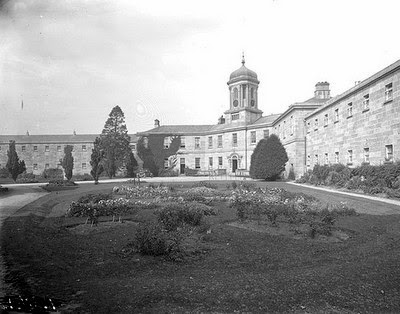
By 1900 it had 1,165 patients crammed into accomodation then designed to hold only 840. This overcrowding was caused by referrals (which could not legally be refused) from local workhouses keen to offload their most challenging inmates, and from families wishing to emigrate to the USA who feared that any relatives exhibiting abnormal behaviour might jeopardise the application for the entire family.
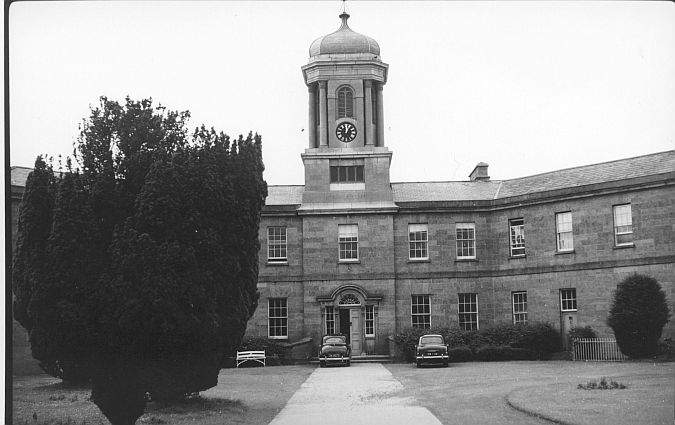
Towards the end of the twentieth century the asylum became known as St Brigid’s hospital, reflecting an evolution in mental health treatment away from the long-term institutionalisation of patients towards more community-based therapy. The hospital was an acute psychiatric ward with only 22 beds by the time it finally closed in 2013, only months after a €2.8m revamp. The hospital and its grounds have lain disused and increasingly derelict ever since, with little apparent effort by the Health Service Executive to sell or redevelop the site.
Our Explore
At the end of our explore I flew my drone over the site – unfortunately I only had 10 minutes battery life left after other sorties earlier in the day, but managed to grab a couple of quick shots. I’ll show the other two drone photos at the end of the report as I usually try to post my shots roughly in the order I took them, but this one gives an overview of the site’s ‘X’ layout, with the staff HQ in the centre and the laundry section to the right hand side of the shot…

Once safely inside we were greeted with our first ‘classic’ asylum view of a peeling corridor replete with abandoned wheelchair…

One of the tiny isolation cells…grim.
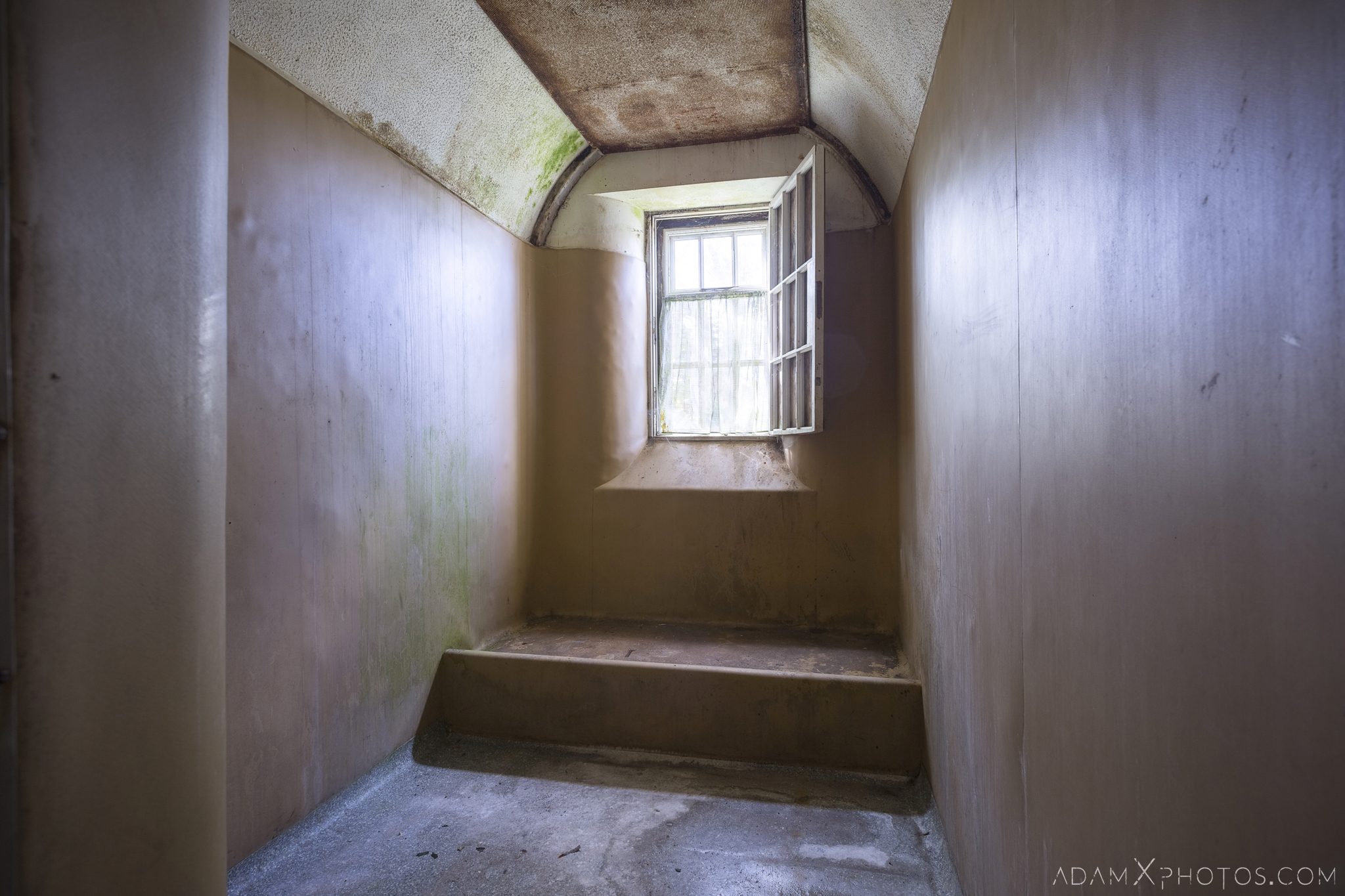
Peeling paint asylum corridor nirvana…
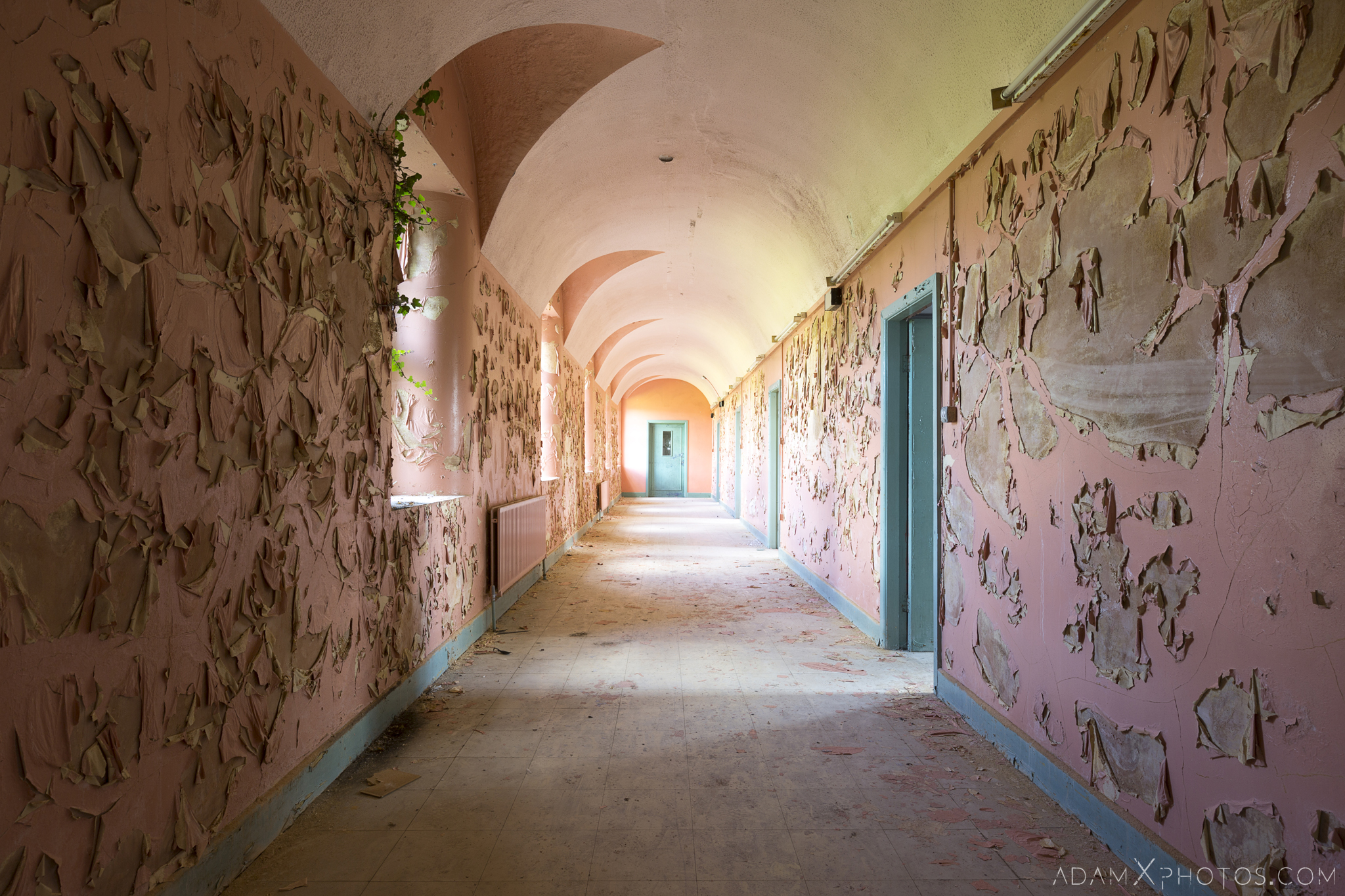
One of the ward rooms was filled with these old hospital beds…

Some very colourful and peeling toilets – Mrs X’s favourite shot of mine from here! :O
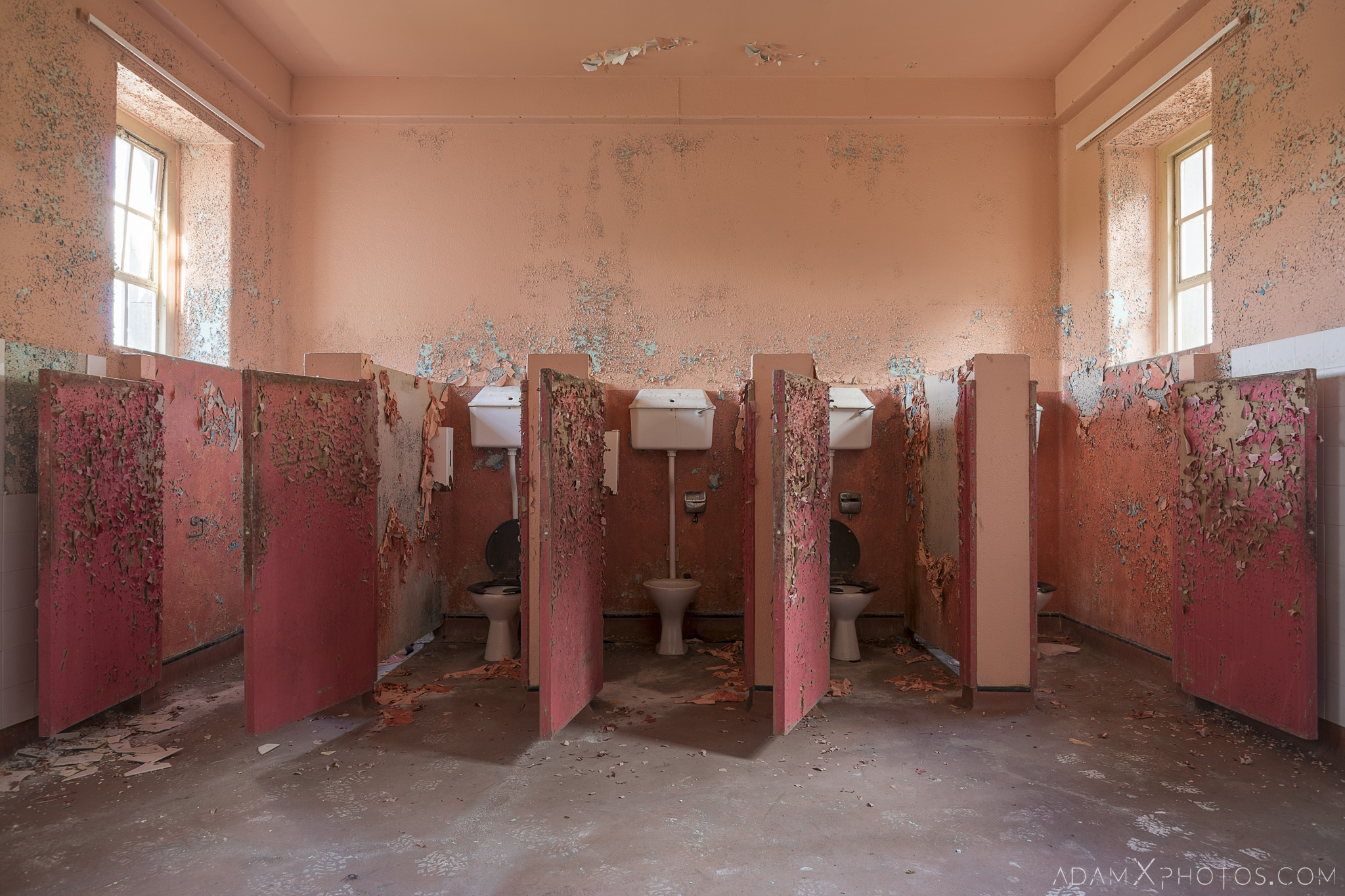
We ended the explore in the laundry section…
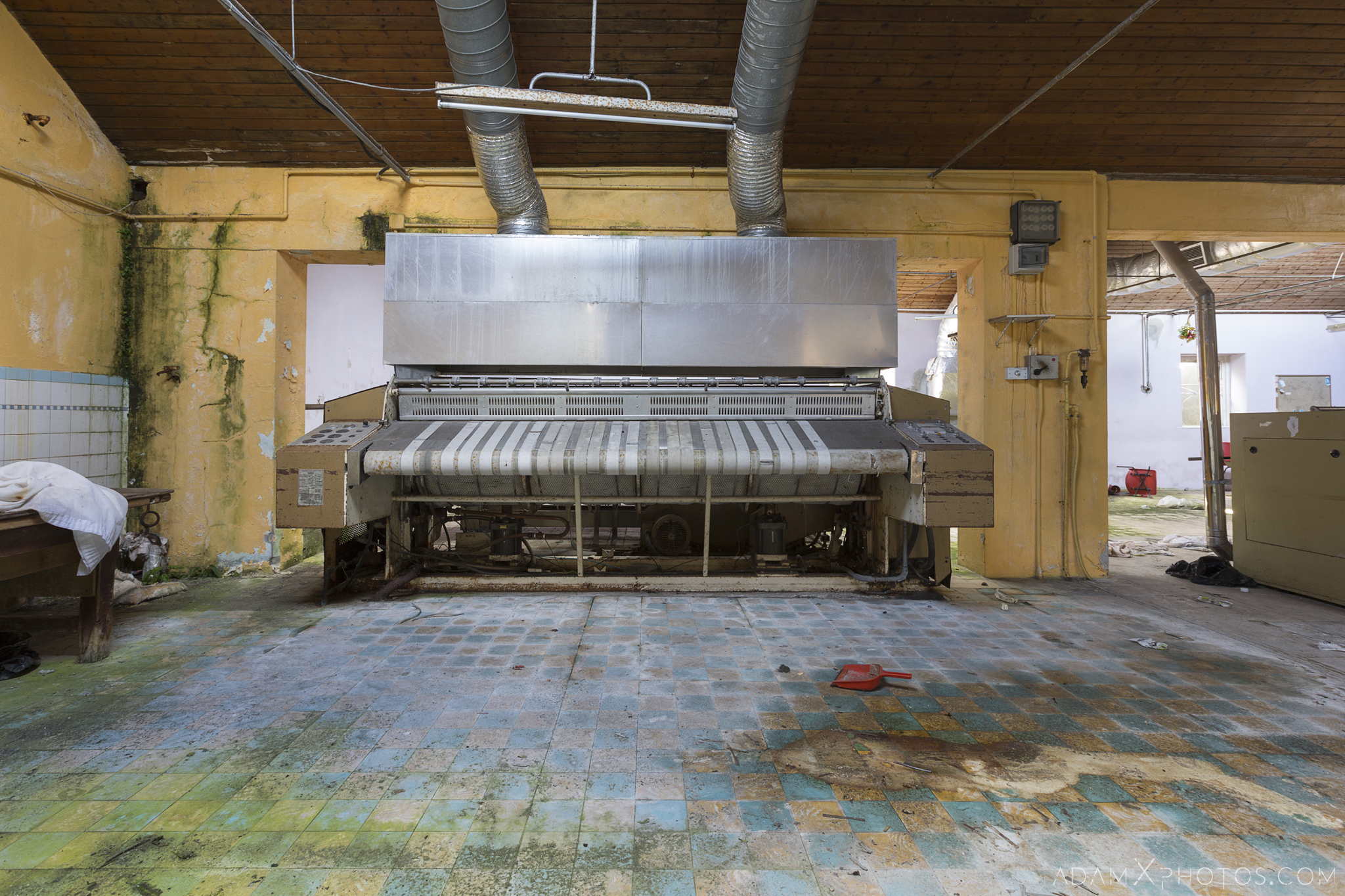
We then made our way back off the site and took a few shots of the main entrance through the gates…
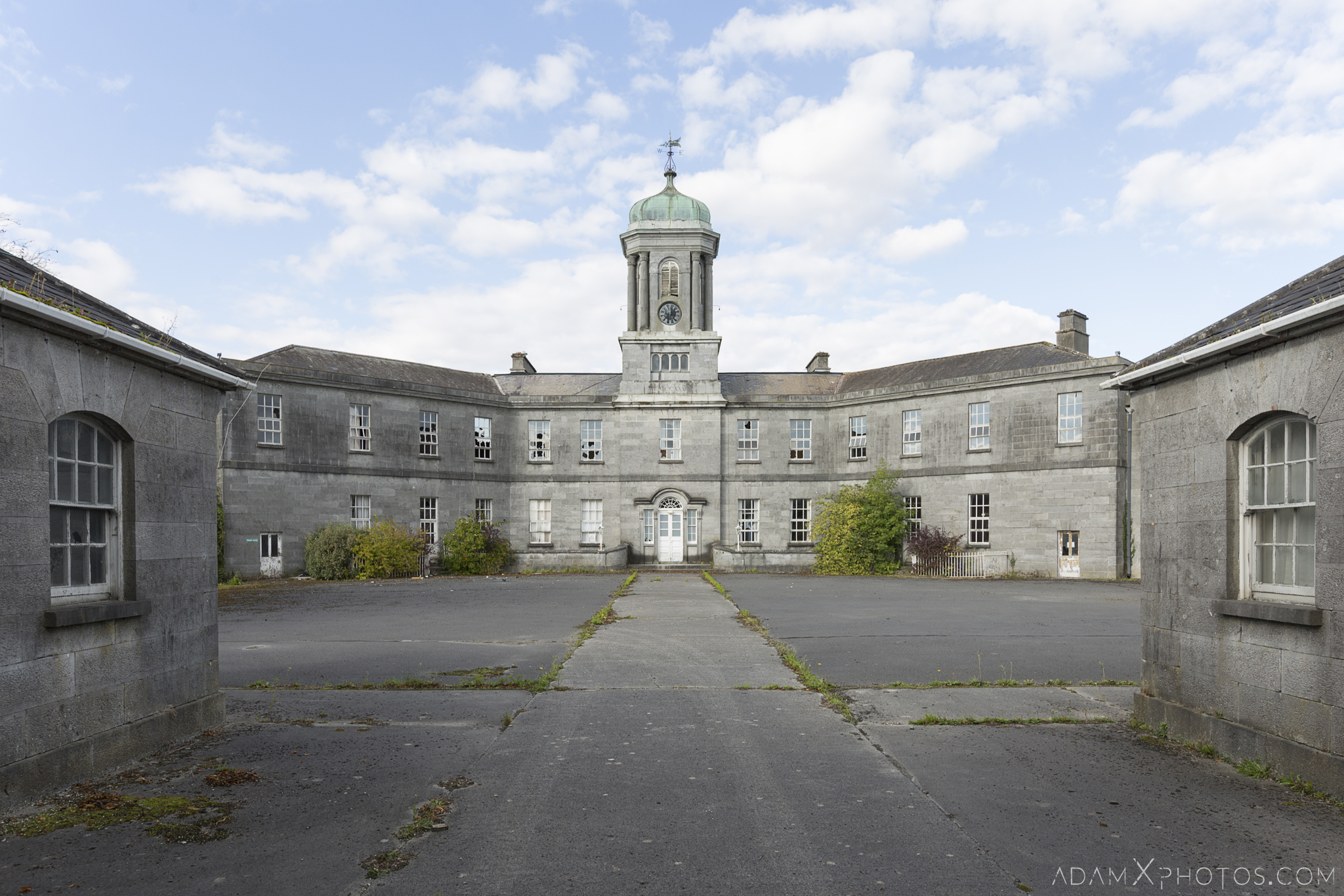
…and I’ll leave you with my other drone shots.
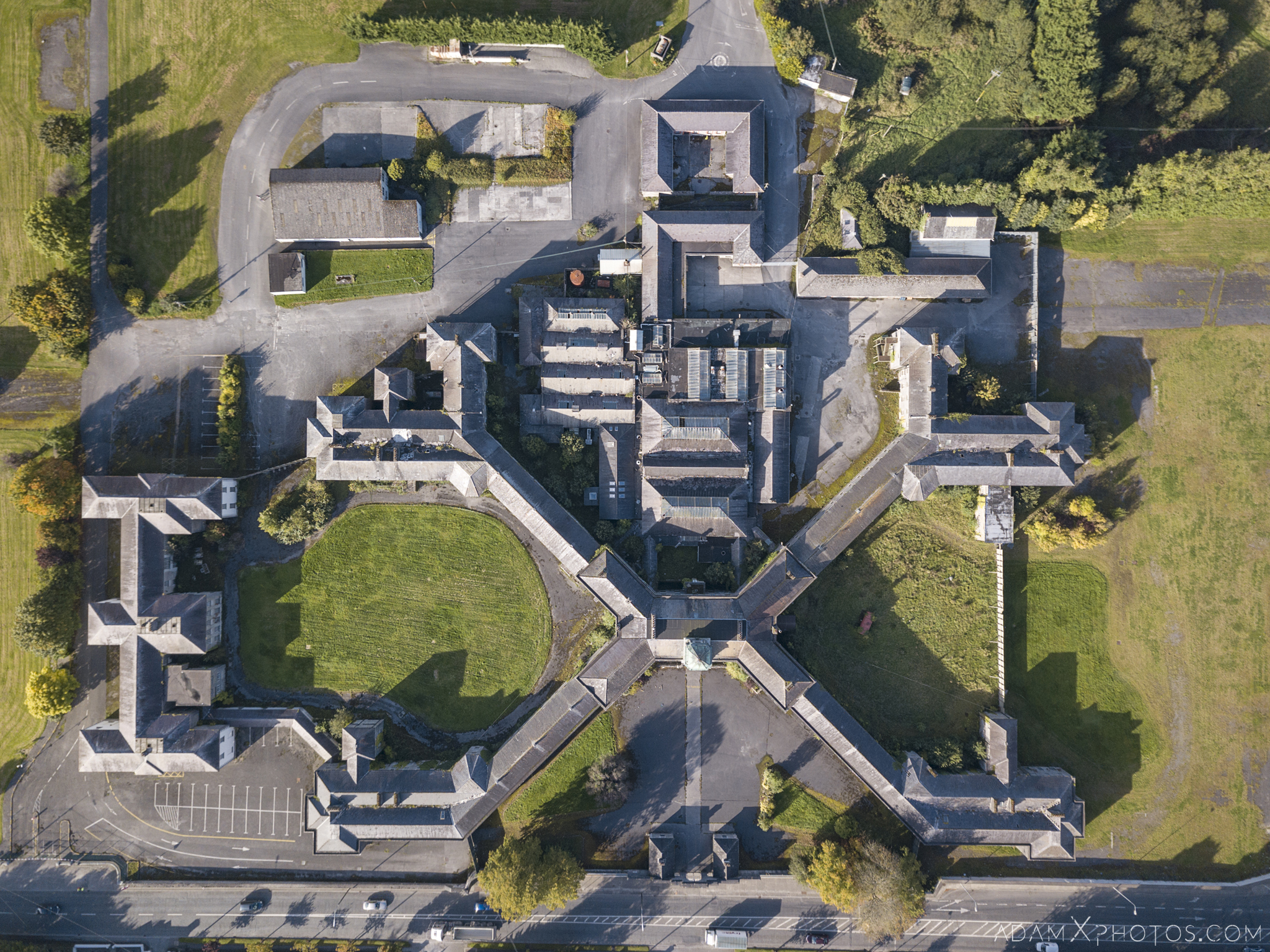
Thank you for your stay – I hope you’re feeling better now.
Adam X

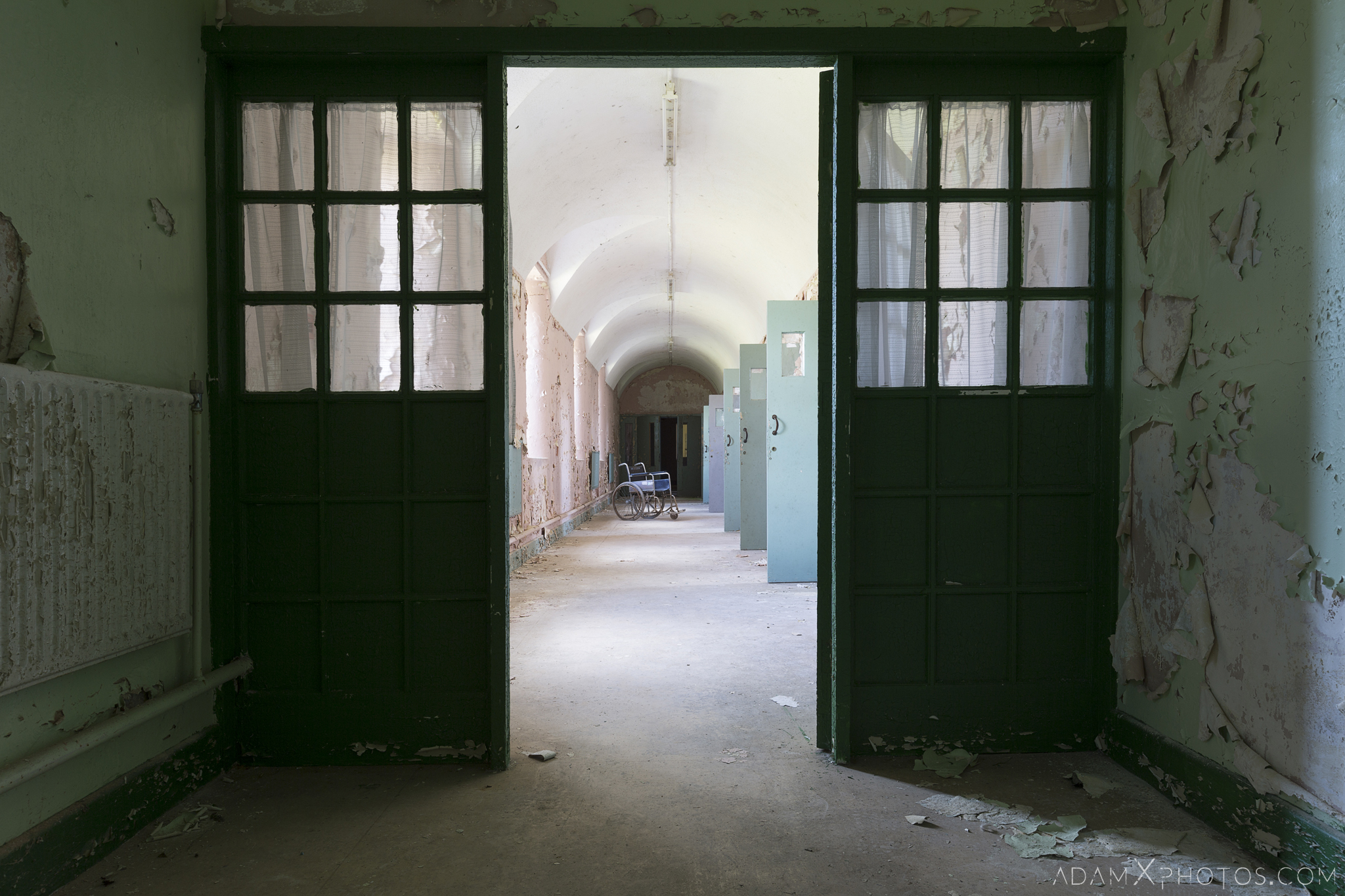
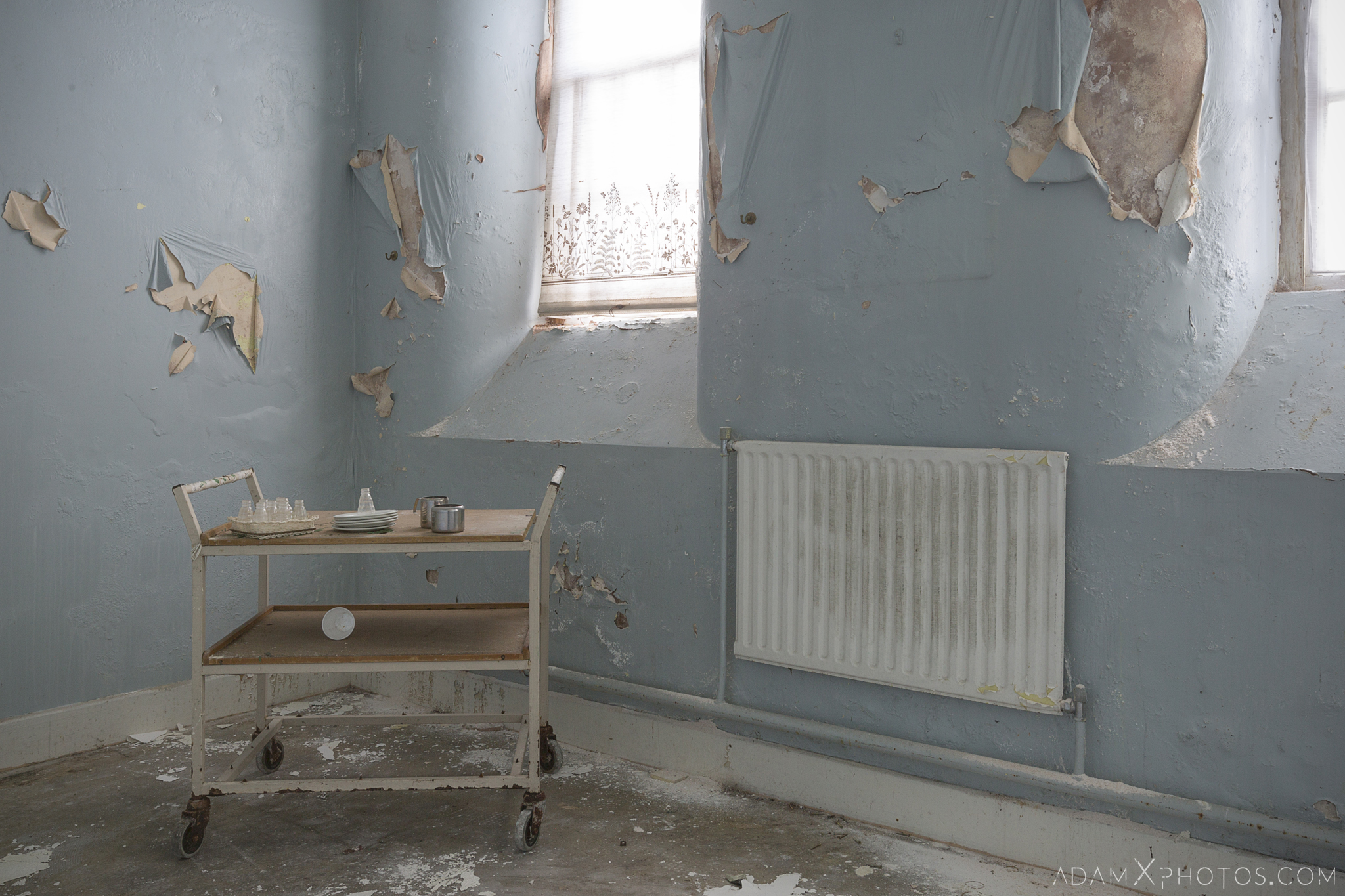
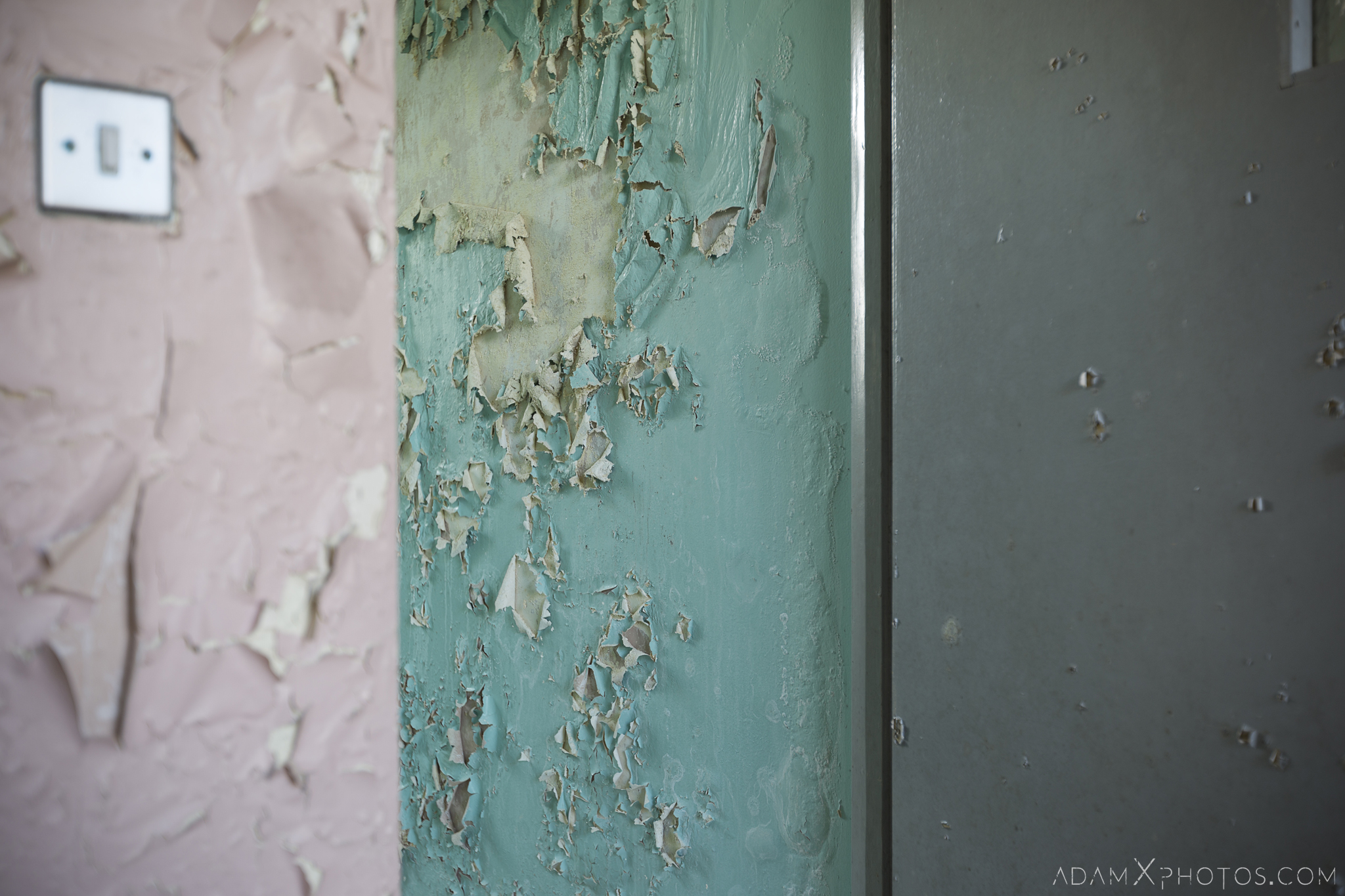

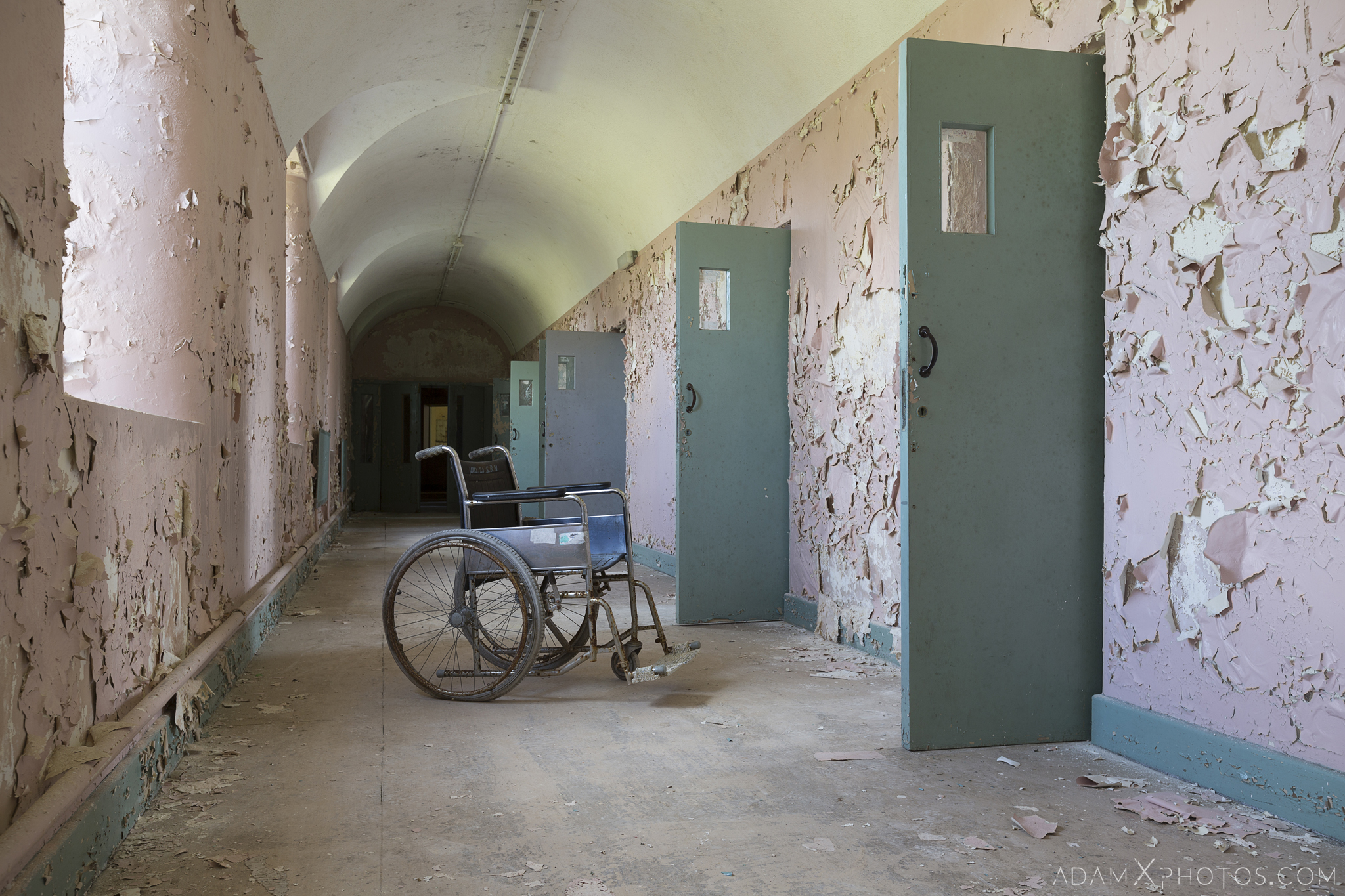


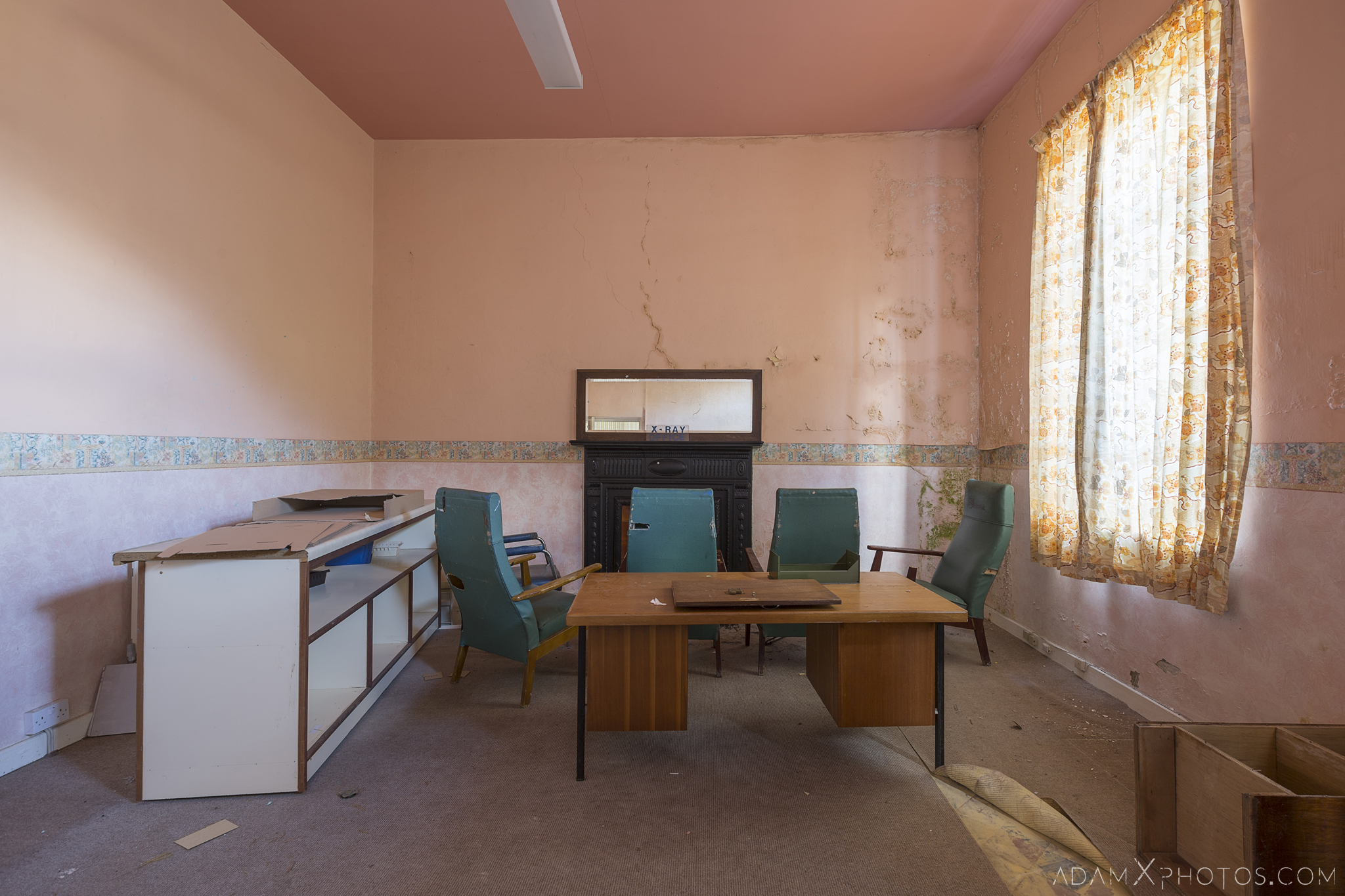
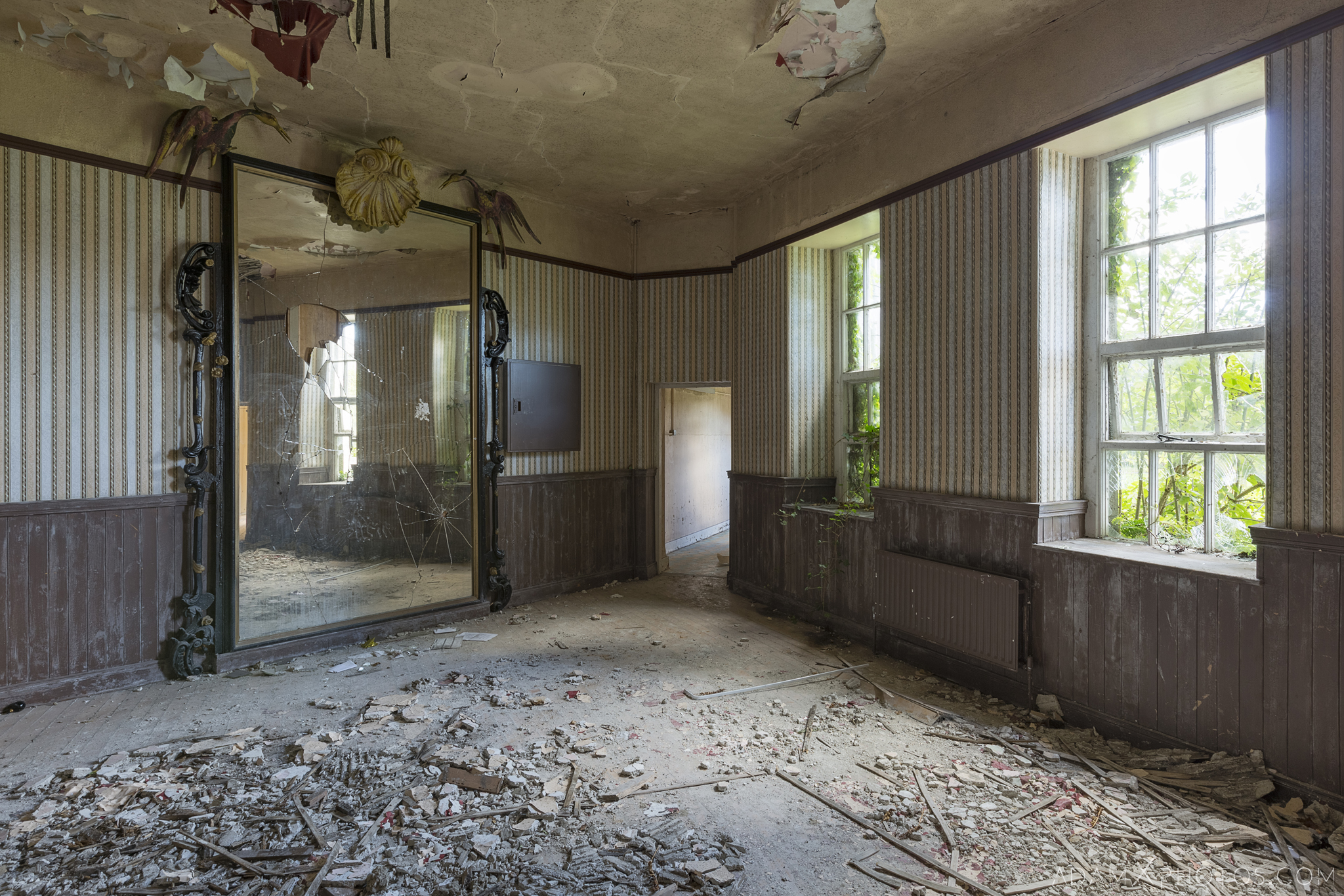
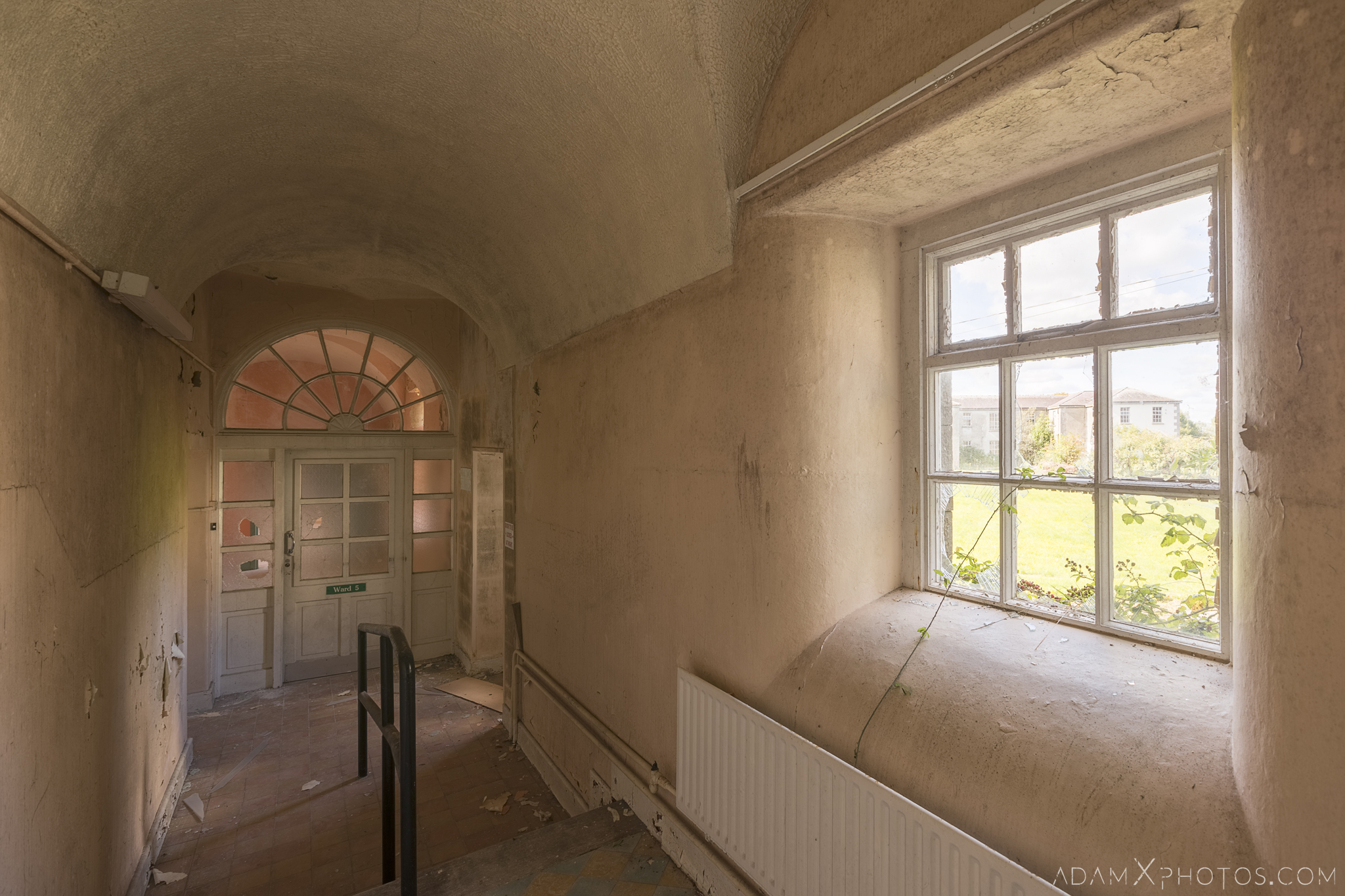
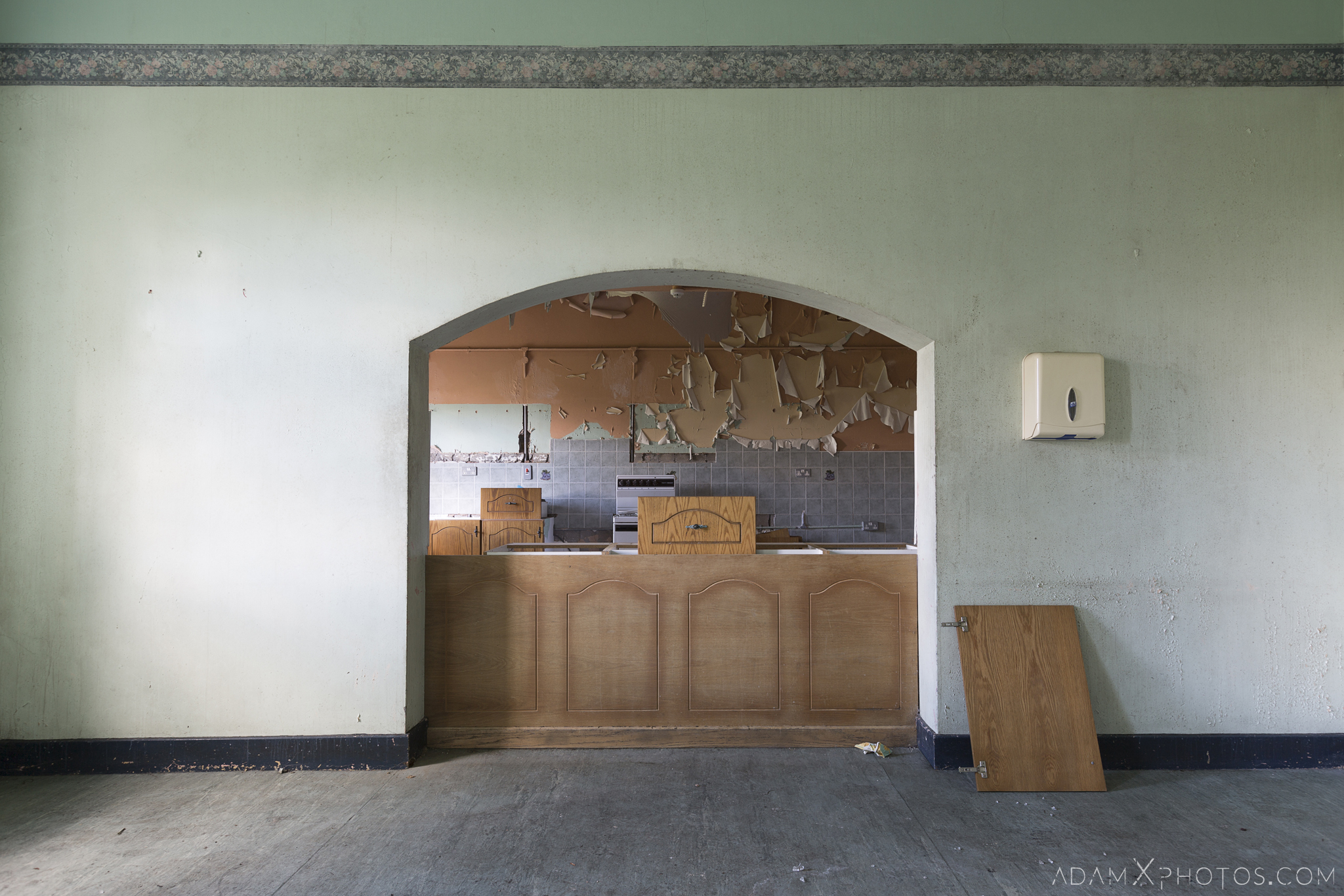


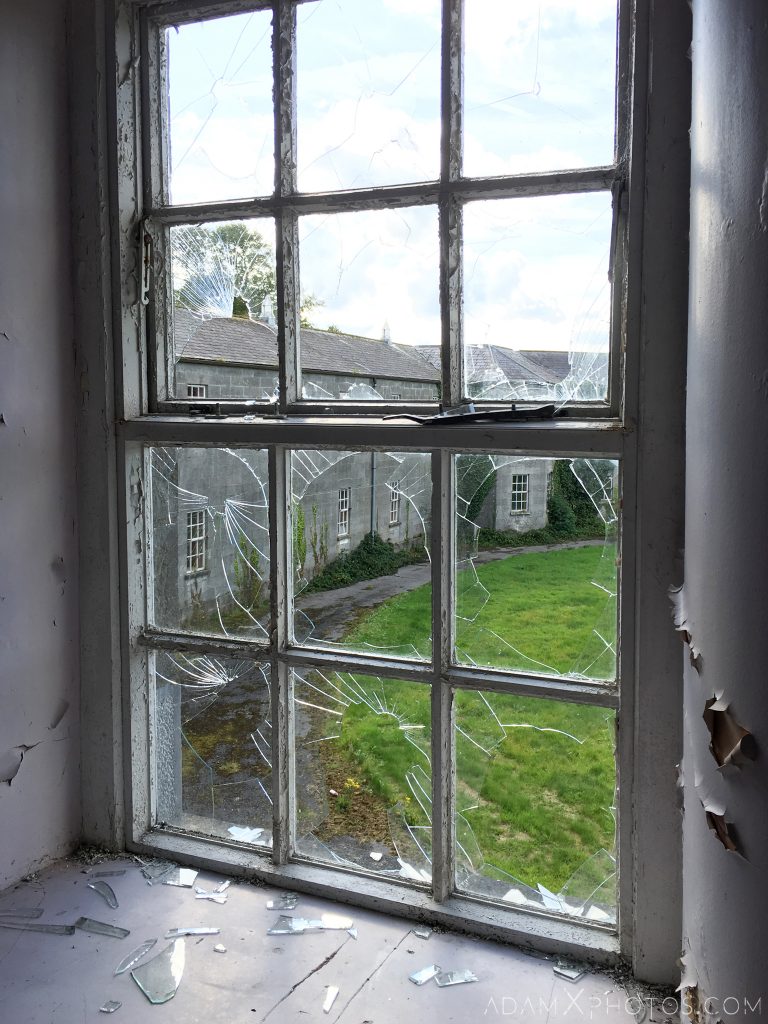
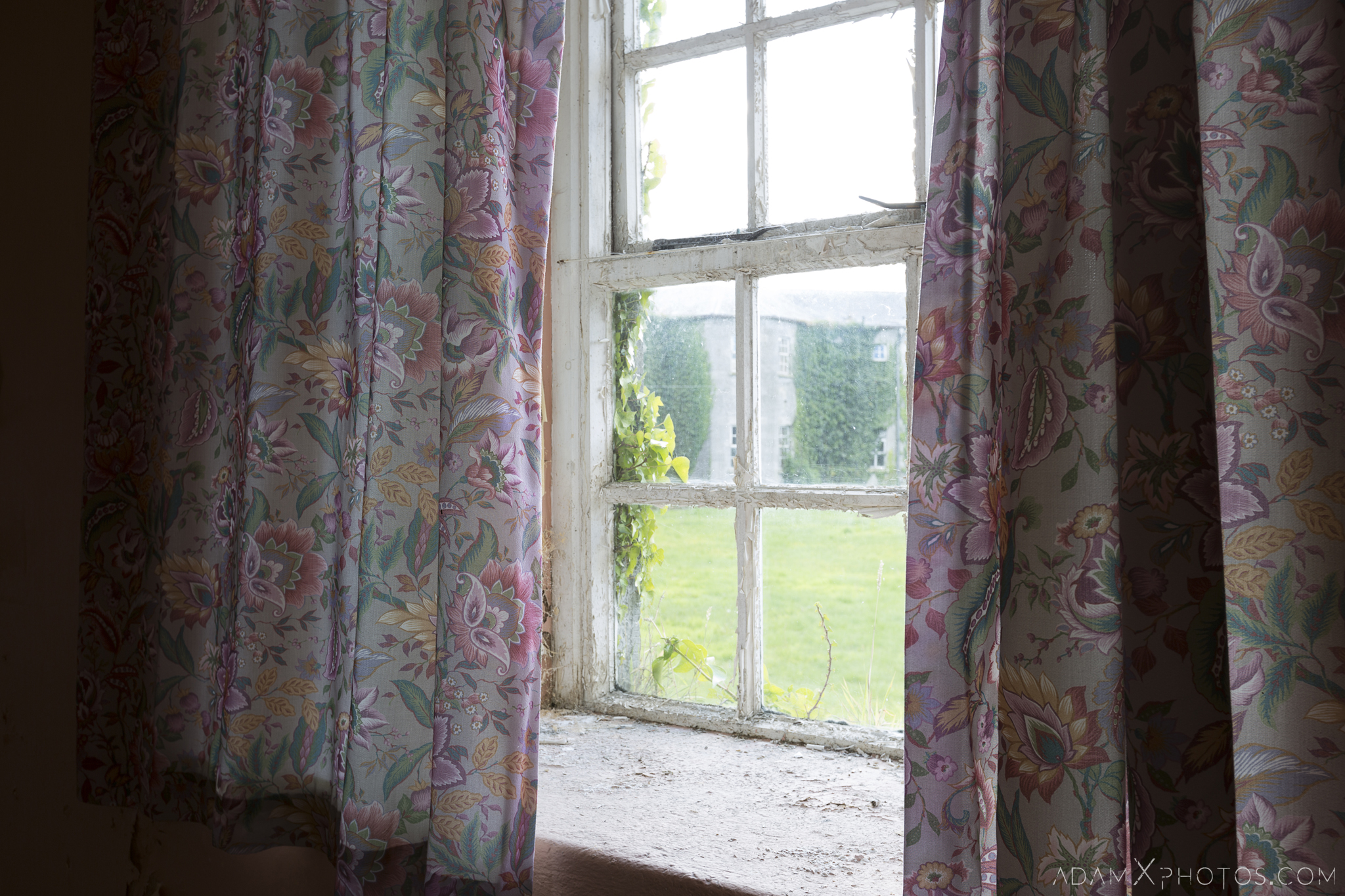


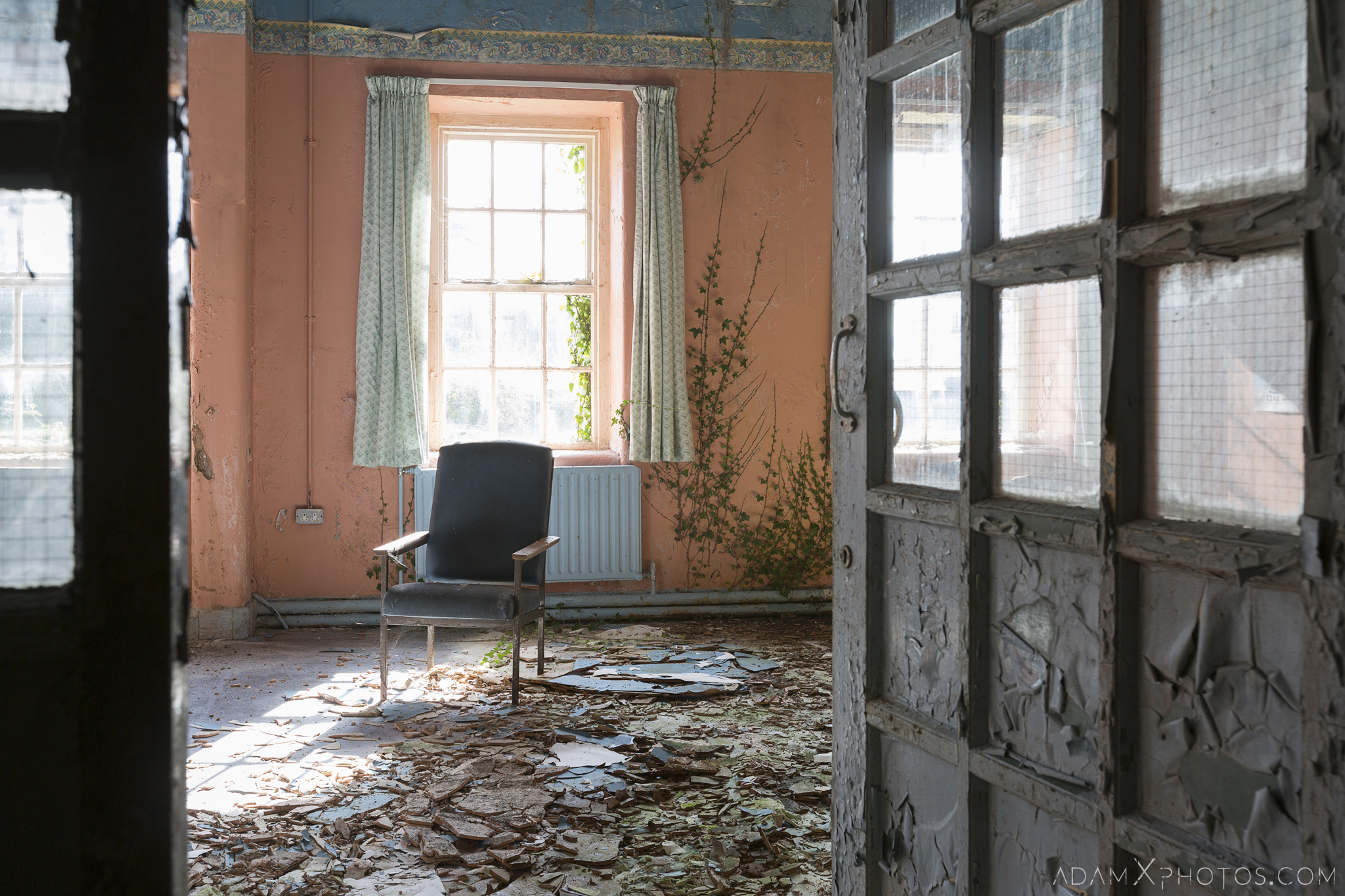
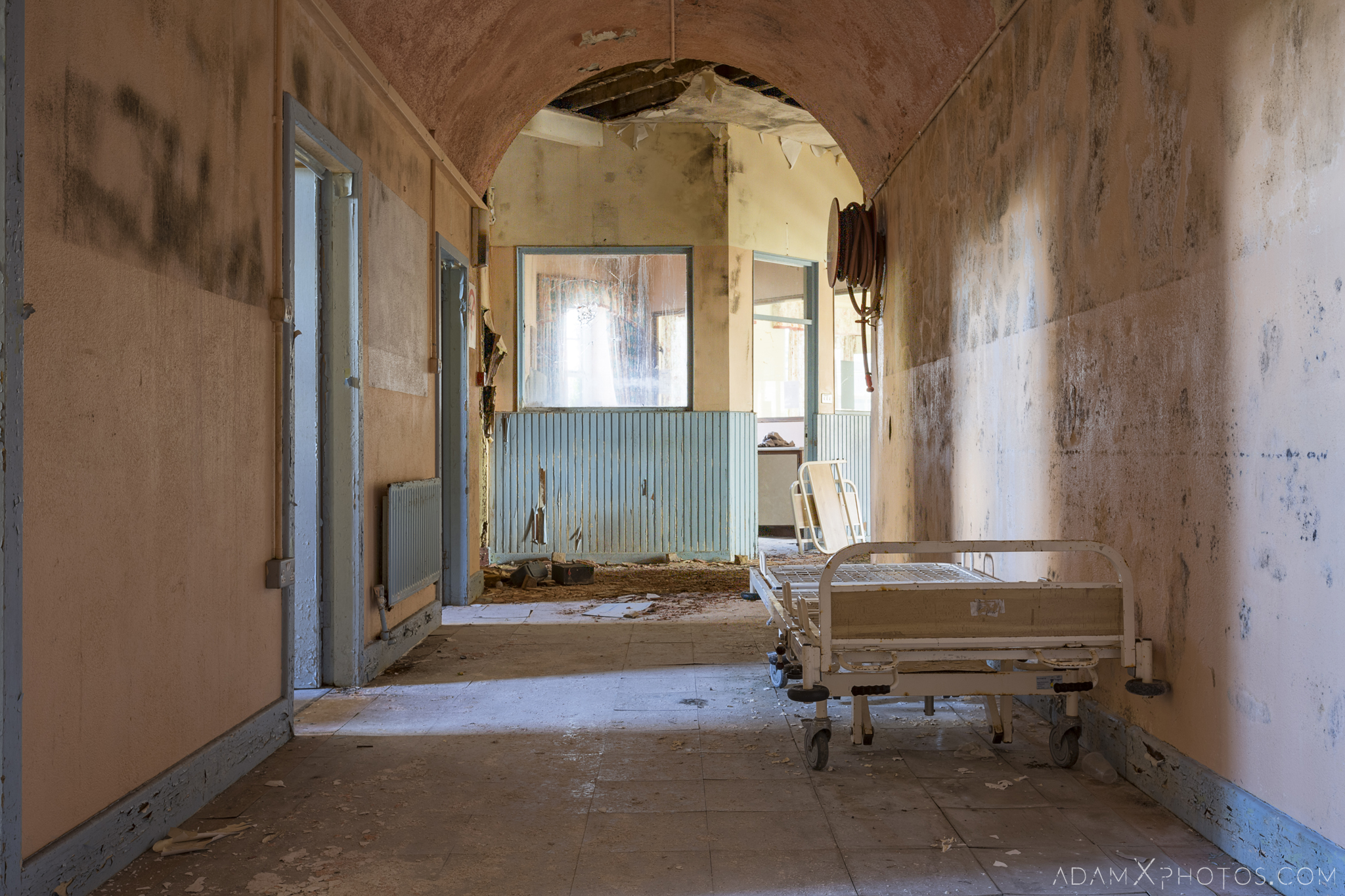
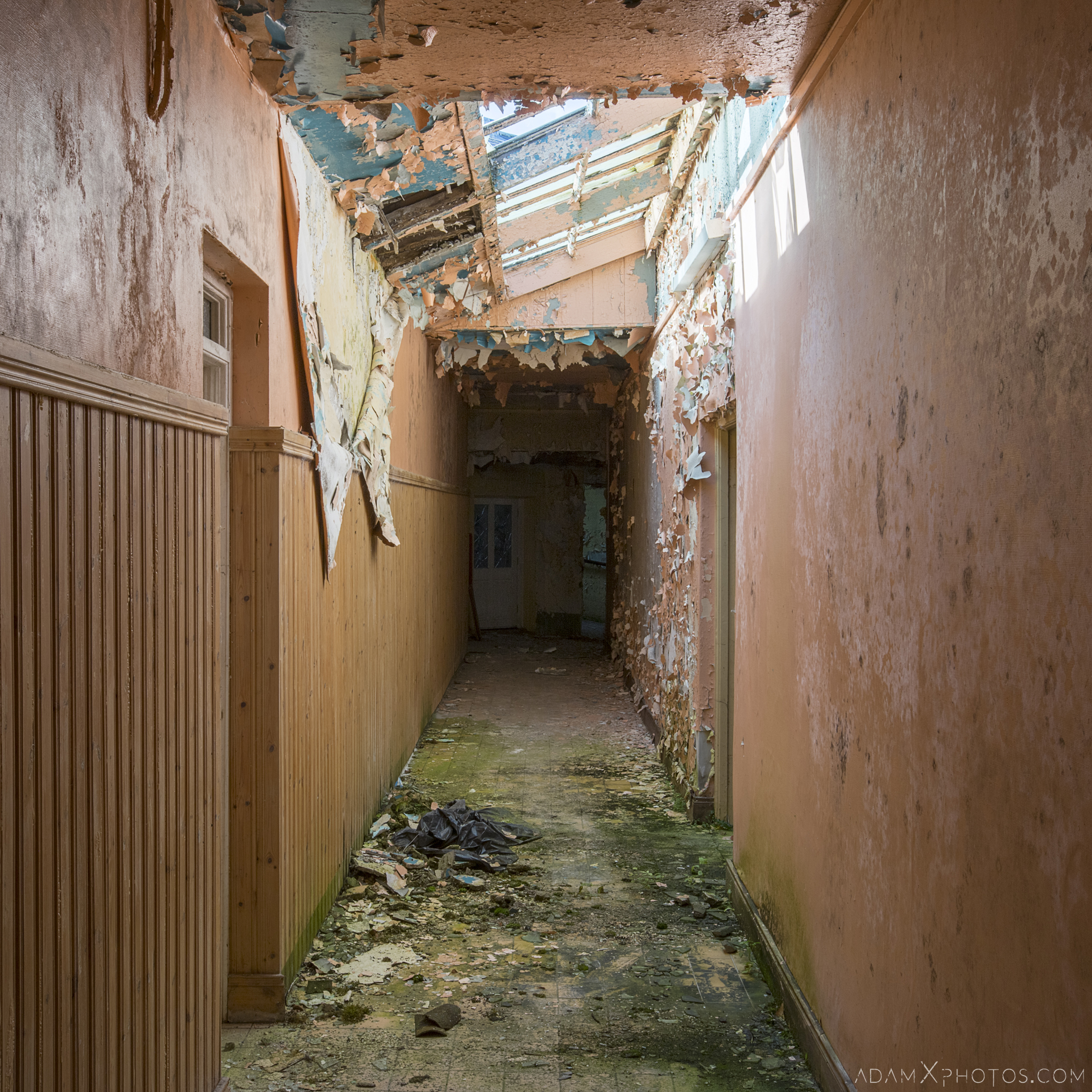



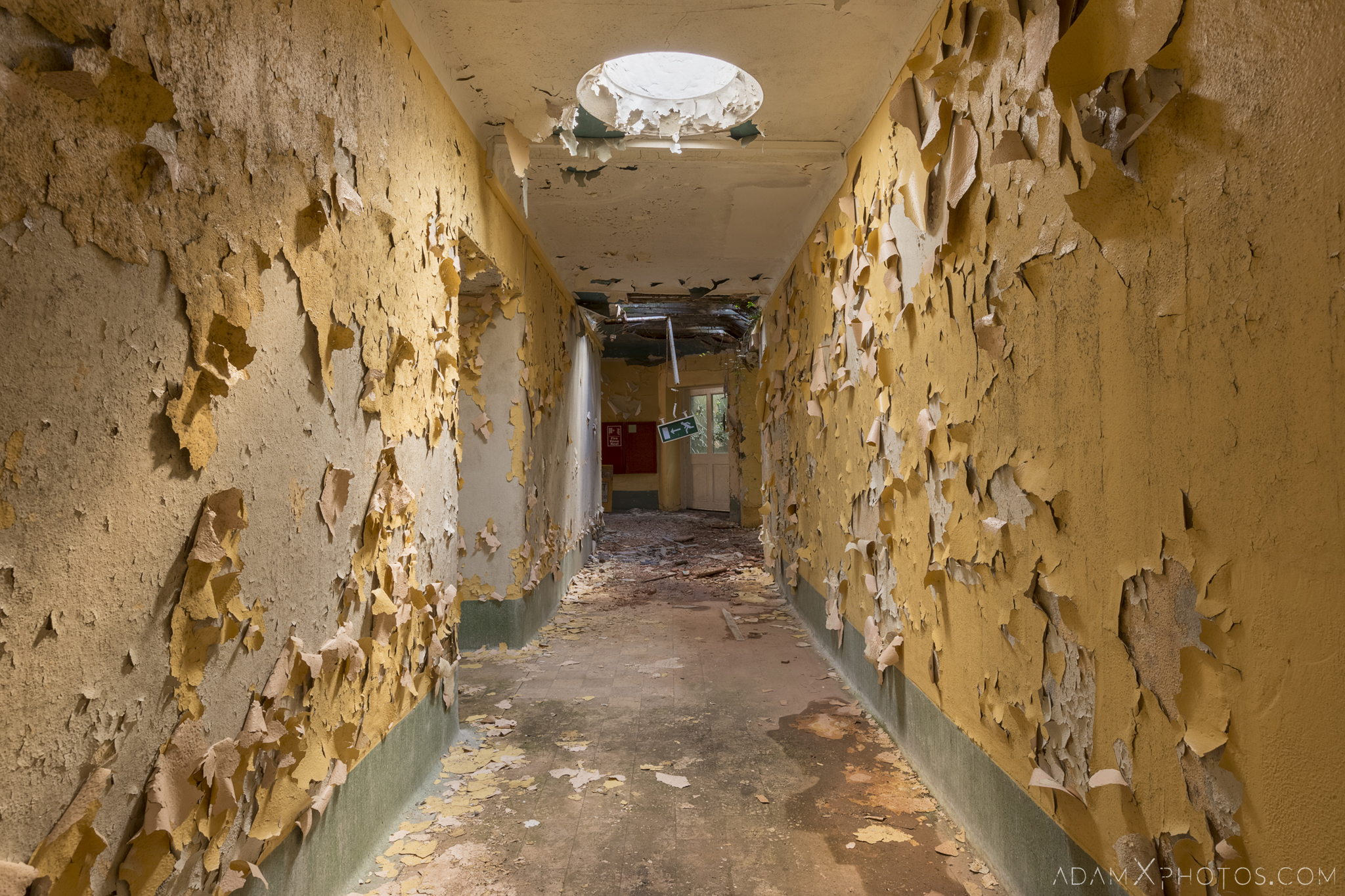
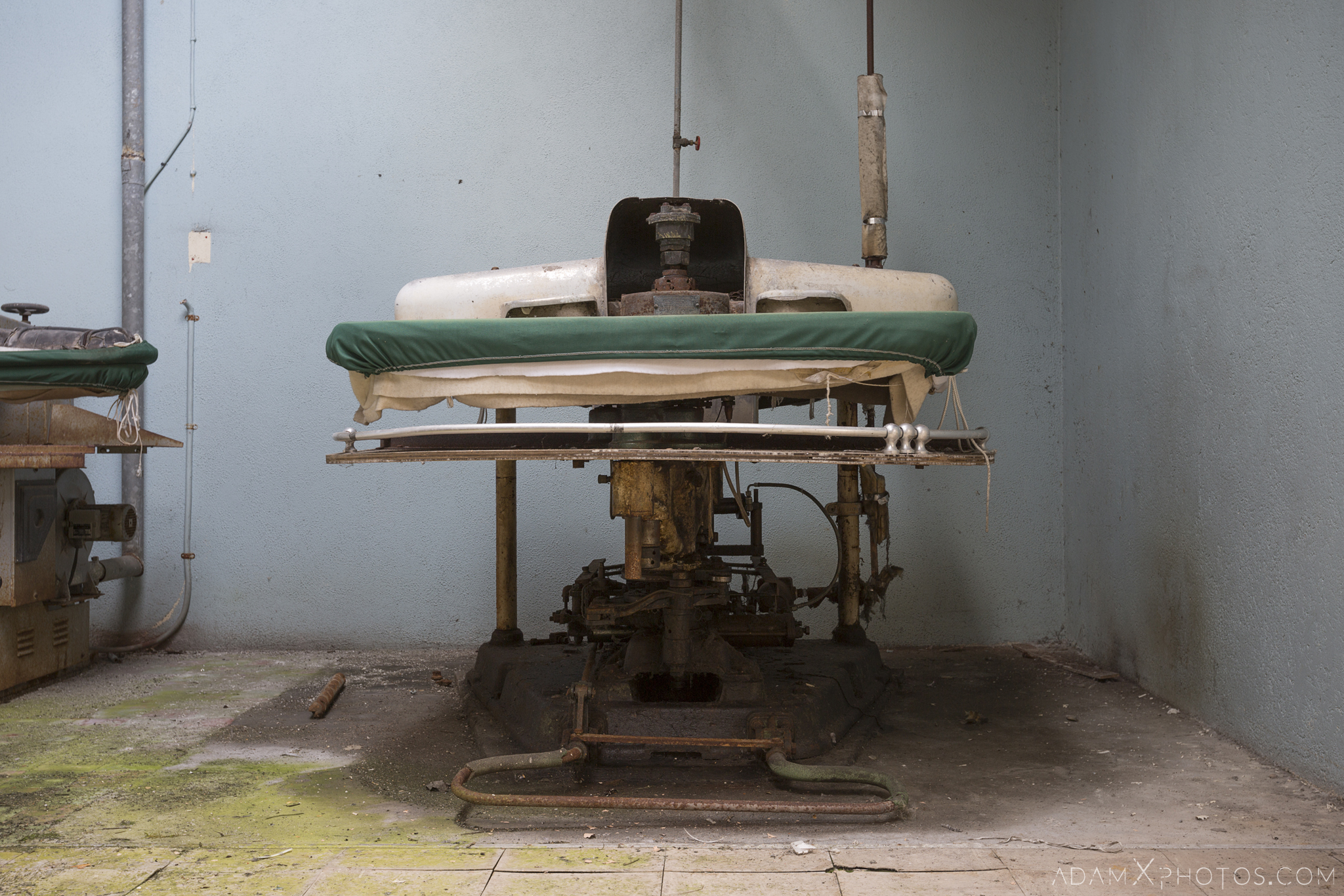

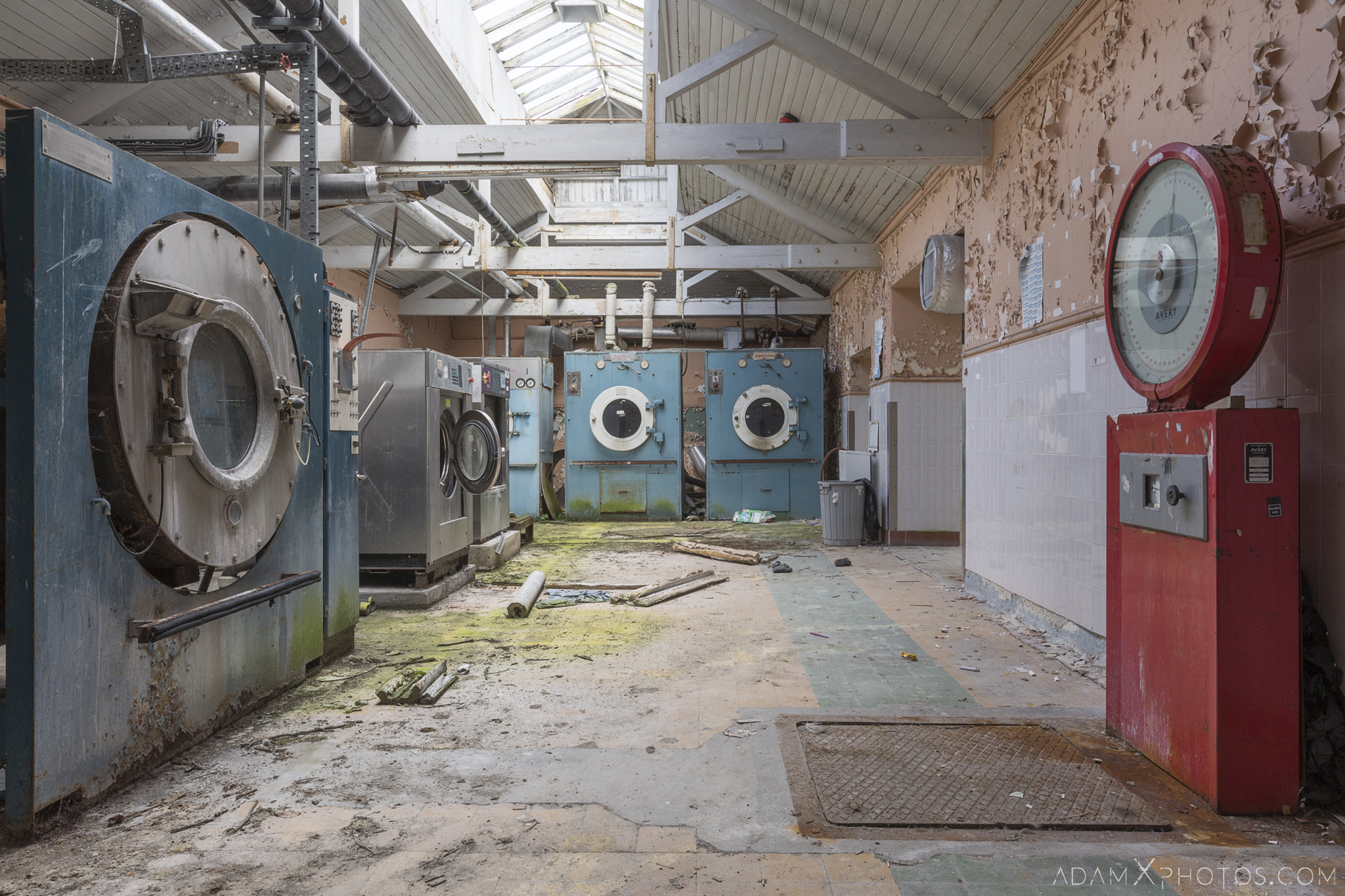
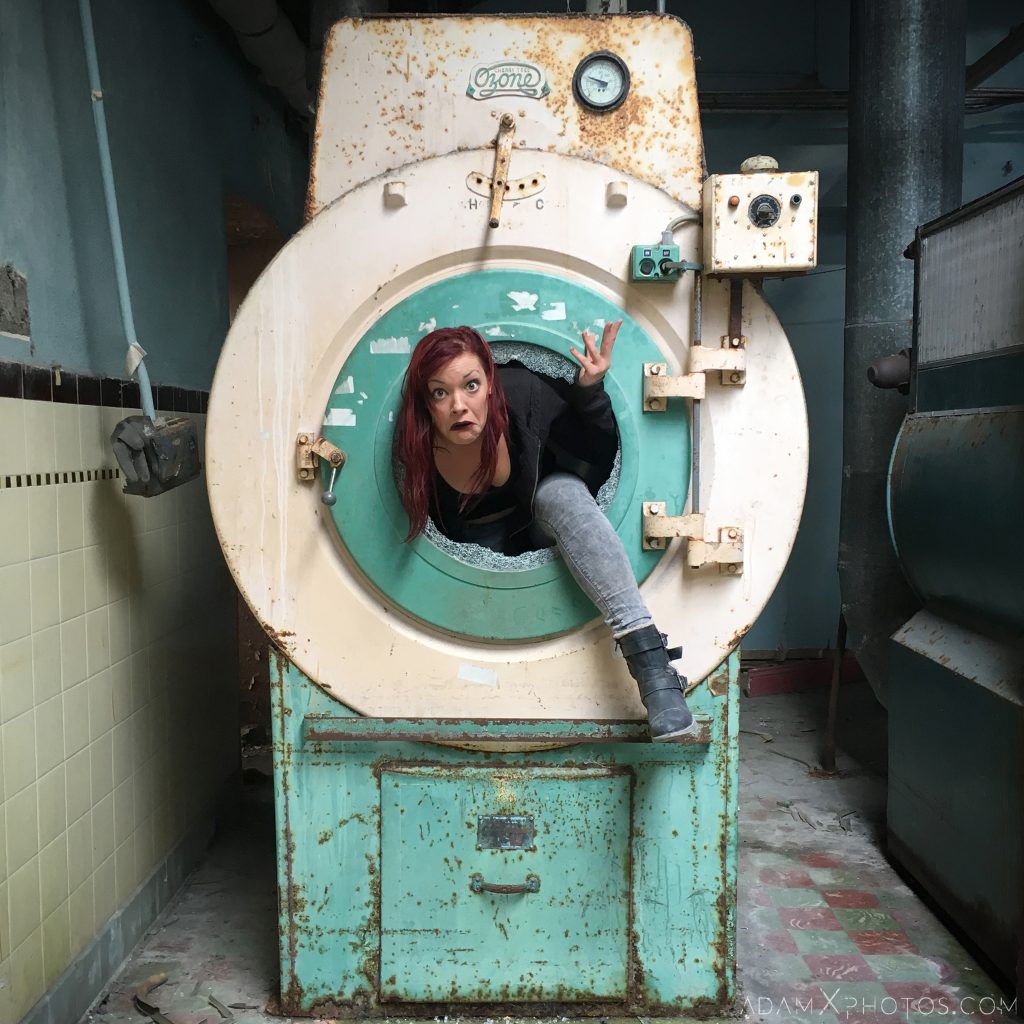
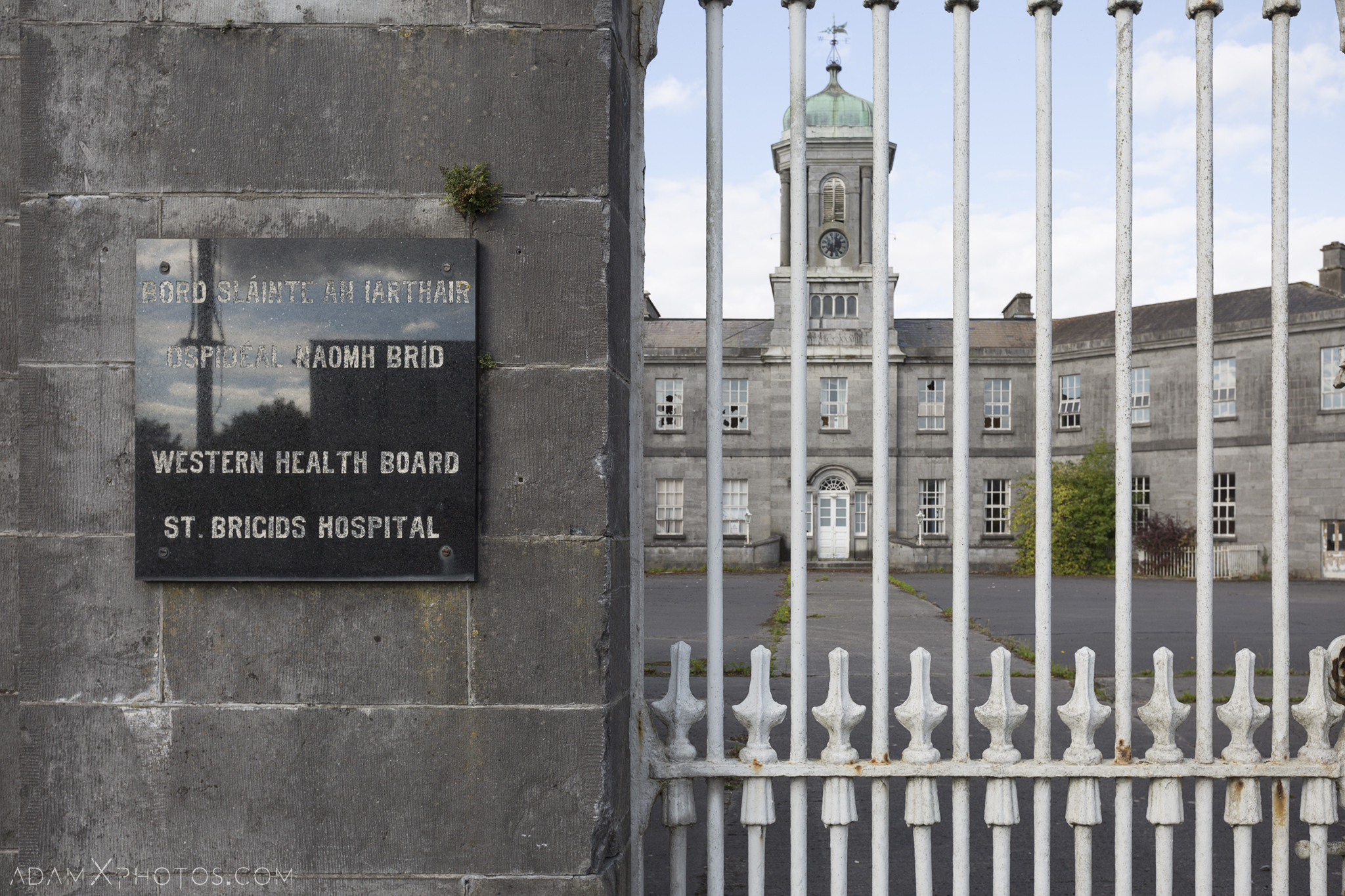
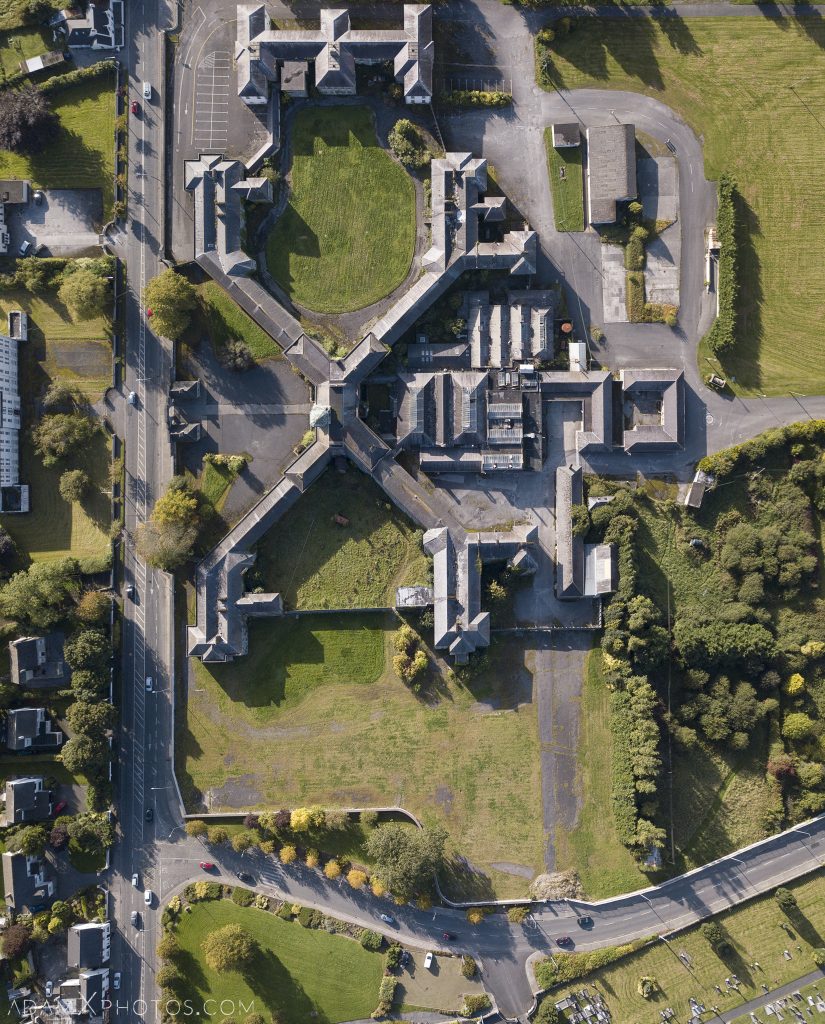
9 comments
The toilet picture is really good. I could be the color that really pops for the viewers eyes. Great set!
Thanks Ken!
great report 🙂 the big mirror wasn’t smashed when i did an explore here, sadly the glass is completely gone now 🙁
Hi,
We are looking into the possible restoration of this building and conversion into an Arts & Cultural Centre.
We are wondering if we could use your photos and report and anything else you might be able to share with us?
Warmest regards
Hi Amanda – please email me details of how you’d like to use my images at info@adamxphotos.com
Thanks
Adam
Hi Amanda, I am currently an architecture student and I am doing my thesis on this building. I would like to get involved in your project. Let me know if this would be possible. Thanks
St. Brigid’s in Ballinasloe should be levelled to the ground. What happened to thousands and thousands of people, including my own father, myself and other people I know in those Irish Gulags amounted to crimes against humanity for which the Irish State must be held accountable.
Personally I would love to see the whole complex in Ballinasloe levelled to the ground. It was a prison more so than a hospital and so much injustice occurred there. People were held indefinitely without any possibility of challenging those in positions of power. The 1945 Mental Treatment Act amounted to indefinite internment without trial. I have personal knowledge of how the dirty rotten system worked.